Galeria de Mukul Banerjee (www.mukulbanerjee.com)
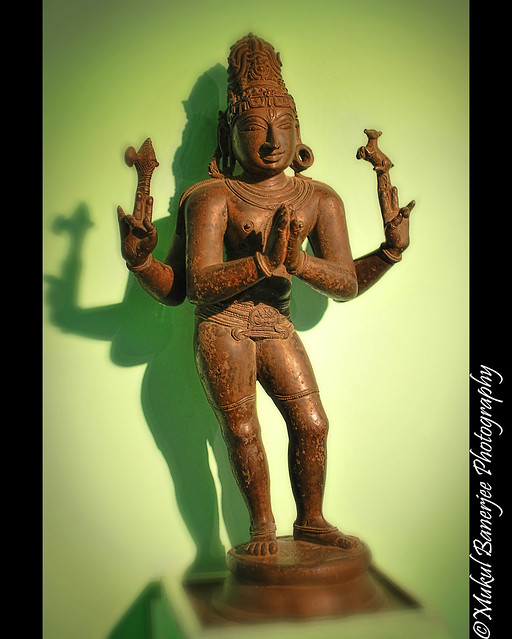
Bronze Statue, 11th CE Chola Empire
The Chola Empire
----------------
The Chola dynasty (Tamil: சோழர் குலம் [ˈt͡ʃoːɻə]) was a Tamil dynasty which was one of the longest-ruling in some parts of southern India. The earliest datable references to this Hindu dynasty are in inscriptions from the 3rd century BC left by Asoka, a northern ruler; the dynasty continued to reign over varying territory until the 13th century AD.
The heartland of the Cholas was the fertile valley of the Kaveri River, but they ruled a significantly larger area at the height of their power from the later half of the 9th century till the beginning of the 13th century. The whole country south of the Tungabhadra was united and held as one state for a period of two centuries and more. Under Rajaraja Chola I and his son Rajendra Chola I, the dynasty became a military, economic and cultural power in South Asia and South-east Asia. The power of the new empire was proclaimed to the eastern world by the celebrated expedition to the Ganges which Rajendra Chola I undertook and by the overthrow after an unprecedented naval war of the maritime empire of Srivijaya, as well as by the repeated embassies to China. During the period 1010–1200, the Chola territories stretched from the islands of the Maldives in the south to as far north as the banks of the Godavari River in Andhra Pradesh. Rajaraja Chola conquered peninsular South India, annexed parts of what is now Sri Lanka and occupied the islands of the Maldives. Rajendra Chola sent a victorious expedition to North India that touched the river Ganges and defeated the Pala ruler of Pataliputra, Mahipala. He also successfully invaded kingdoms of the Malay Archipelago. The Chola dynasty went into decline at the beginning of the 13th century with the rise of the Pandyas, who ultimately caused their downfall.
The Cholas left a lasting legacy. Their patronage of Tamil literature and their zeal in building temples have resulted in some great works of Tamil literature and architecture.The Chola kings were avid builders and envisioned the temples in their kingdoms not only as places of worship but also as centres of economic activity.They pioneered a centralised form of government and established a disciplined bureaucracy.
The Chola Art
-------------
The period of the imperial Cholas (c. 850 CE - 1250 CE) was an age of continuous improvement and refinement of the Dravidian art and architecture. They utilised their prodigious wealth earned through their extensive conquests in building long-lasting stone temples and exquisite bronze sculptures. Most of these still stand proudly articulating those glorious days.
The Chola period is also remarkable for its sculptures and bronzes. Among the existing specimens in the various museums of the world and in the temples of South India may be seen many fine figures of Siva in various forms, Vishnu and his consort Lakshmi, Siva saints and many more. Though conforming generally to the iconographic conventions established by long tradition, the sculptor worked in great freedom in the eleventh and the twelfth centuries and the sculptures and bronzes show classic grace, grandeur and perfect taste. The best example of this can be seen in the form of Nataraja the Divine Dancer.
While the stone sculptures and the inner sanctum image empowering the temple remained immovable, changing religious concepts during the 10th century demanded that the deities take part in a variety of public roles similar to those of a human monarch. As a result, large bronze images were created to be carried outside the temple to participate in daily rituals, processions, and temple festivals. The round lugs and holes found on the bases of many of these sculptures are for the poles that were used to carry the heavy images. Admired for the sensuous depiction of the figure and the detailed treatment of their clothing and jewelry,
Although bronze casting has a long history in south India, a much larger and a much greater number of bronze sculptures were cast during the Chola period than before, further attesting to the importance of bronze sculpture during this period. It should be noted that when in worship, these images are covered in silk cloths, garlands, and jewels, and would not appear as they do outside a religious context. Decorating the bronzes in this way is a tradition at least a thousand years old as such decorations are referred to in 10th-century Chola inscriptions.
Hundreds of Chola bronzes have been smuggled out of India and have found their way into the private museums of art-collectors.
Chola period bronzes were created using the lost wax technique. It is known in artistic terms as "Cire Perdue". The Sanskrit Shilpa texts call it the Madhu Uchchishtta Vidhana.
Beeswax and kungilium (a type of camphor) are mixed with a little oil and kneaded well. The figure is sculpted from this mixture fashioning all the minute details. This is the wax model original.
The entire figure is then coated with clay made from termite hills until the mould is of a necessary thickness. Then the whole thing is dried and fired in an oven with cow-dung cakes. The wax model melts and flows out, while some of it vapourises.
The metal alloy of bronze is melted and poured into the empty clay-mould. This particular bronze alloy is known as Pancha Loham. When the metal has filled all crevices and has settled and hardened and cooled, the mould is broken off. The bronze figure thus obtained is then cleaned, finer details are added, blemishes are removed, smoothened, and polished well. Hence each bronze icon is unique and the mould cannot be used to create copies.
The forms of Chola bronzes are very plastic. They are devoid of intricate ornaments and designs. They are very expressive. There is grace, elegance, beauty, and above all else - life. By means of the facial expressions and gestures or mudras and the pose, we can imagine the surroundings of the figure of the god or goddess; what instrument or weapon he or she is holding; what he or she is leaning on; and what he or she is doing or about to do.
There is a pose called Rishabaandhika pose. We see Siva standing with one leg crossed over to the other side, across the other leg . We see that the way His arm is flexed and raised, it is resting on something. The way that His body is tilted suggests that He is leaning on something. In this scenario, Siva is leaning on his bull-vahana, Nandhi, on whose shoulders He is resting His arm.
The most famous of all the bronze icons is that of Nataraja.The symbolism presents Siva as lord of the cosmic dance of creation and destruction. He is active, yet aloof, like the gods on the Parthenon Frieze. Surrounding Siva, a circle of flames represents the universe, whose fire is held in Shiva's left rear palm. His left front arm crosses his chest, the hand pointing in "elephant trunk" position (gaja hasta) to his upraised left foot, which signifies liberation. His right foot tramples the dwarf Apasmara, who represents ignorance.
Siva's right front hand is raised in the "fear-not" gesture of benediction (abhaya mudra), while his right rear hand holds a drum with which he beats the measure of the dance. The snake, an emblem of Siva, curls around his arm. His hair holds the crescent moon - another emblem - and a small image of Ganges, the river-goddess whose precipitous fall from heaven to earth is broken by Siva's matted locks.
In 1931, Chola frescoes were discovered within the circumambulatory corridor of the Brihadisvara Temple, by S.K.Govindasamy, a professor at the Annamalai University. These are the first Chola paintings discovered. The passage of the corridor is dark and the walls on either side are covered with two layers of paintings from floor to ceiling.
Researchers have discovered the technique used in these frescoes. A smooth batter of limestone mixture is applied over the stones, which took two to three days to set. Within that short span, such large paintings were painted with natural organic pigments.
During the Nayak period, the Chola paintings were painted over. The Chola frescos lying underneath have an ardent spirit of saivism is expressed in them. They probably synchronised with the completion of the temple by Rajaraja Chola.
en.wikipedia.org/wiki/Cholas
en.wikipedia.org/wiki/Chola_art
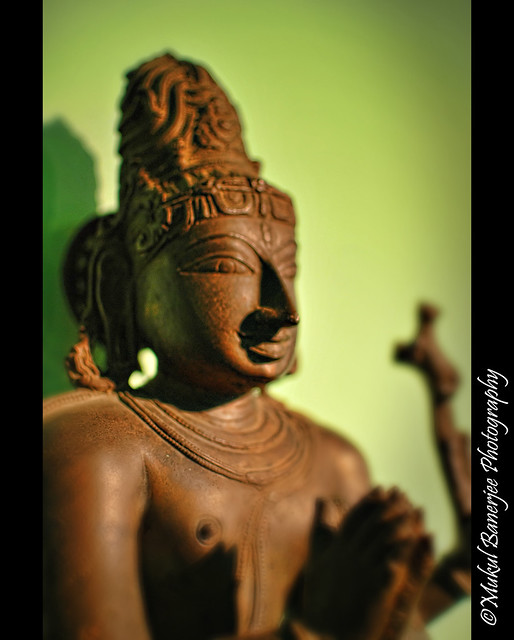
Bronze Statue, 11th CE Chola Empire
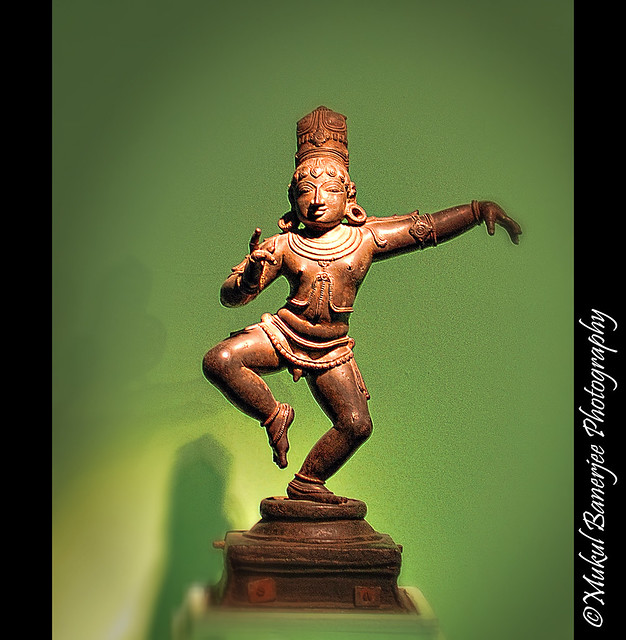
A dancing Balakrishna, 8th CE Chola Empire
Bala Krishna
------------
Bala Krishna (Sanskrit: बाल-कृष्ण bālakṛṣṇa, literally "child Krishna") sometimes translated to "Divine Child Krishna",[1] is historically one of the early forms of worship in Krishnaism and an element of the history of Krishna worship in antiquity. This tradition is considered as a part of the number of other traditions that led to amalgamation in a later stage of the historical development and culminate in worship of Radha Krishna as Svayam bhagavan. Other monotheist traditions are Bhagavatism and Cult of Gopala, that along with Cult of Krishna-Vasudeva form the basis of the current tradition of the monotheistic Krishna religion. The worship of Balakrishna, the divine child, while a significant feature of the Krishna religion, often receives less attention, however it is one of the most popular deities of Krishna in many parts of India today. Early evidence of such worship can be found or as early as the 4th century BC according to evidence in Megasthenes and in the Arthasastra of Kautilya, when Vasudeva (as the son of Vasudeva was worshiped as supreme Deity in a strongly monotheistic format, where the supreme Being was perfect, eternal and full of grace.
Some of the miraculous acts of the form are notable. Its is believed that Putana, a huge monster, was killed when the baby Krishna sucked her life from her by taking the poisoned breast she offered him.
Bala-Krishna is often depicted as a small child crawling on his hands and knees or dancing with a piece of butter in his hand.
In the Bhagavad Gita, it appears Krishna is teaching a universal monotheistic religion of personal God and reveals himself to be all-God, svayam bhagavan. The historical fusion of Krishna with Vishnu involved a transfer of many of Vishnu's epithets, as well as his functions, to Krishna. The childhood episodes of Krishna's legend became the focus of the medieval devotional cults that started to develop in a number of movements in medieval India.
en.wikipedia.org/wiki/Cholas
en.wikipedia.org/wiki/Chola_art
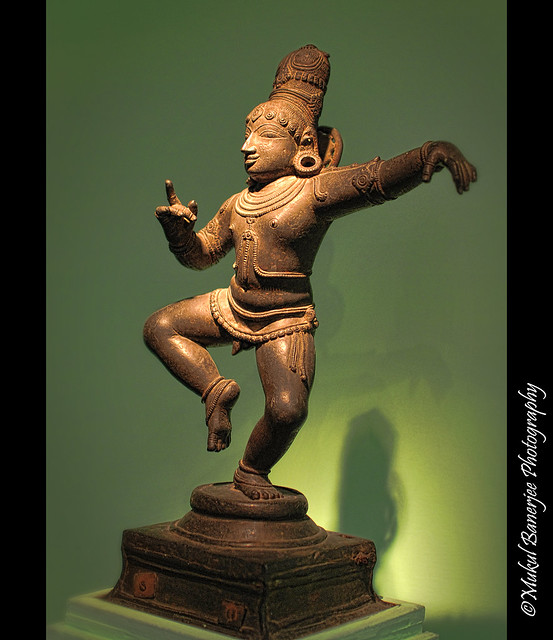
A dancing Balakrishna, 8th CE Chola Empire
Bala Krishna
------------
Bala Krishna (Sanskrit: बाल-कृष्ण bālakṛṣṇa, literally "child Krishna") sometimes translated to "Divine Child Krishna",[1] is historically one of the early forms of worship in Krishnaism and an element of the history of Krishna worship in antiquity. This tradition is considered as a part of the number of other traditions that led to amalgamation in a later stage of the historical development and culminate in worship of Radha Krishna as Svayam bhagavan. Other monotheist traditions are Bhagavatism and Cult of Gopala, that along with Cult of Krishna-Vasudeva form the basis of the current tradition of the monotheistic Krishna religion. The worship of Balakrishna, the divine child, while a significant feature of the Krishna religion, often receives less attention, however it is one of the most popular deities of Krishna in many parts of India today. Early evidence of such worship can be found or as early as the 4th century BC according to evidence in Megasthenes and in the Arthasastra of Kautilya, when Vasudeva (as the son of Vasudeva was worshiped as supreme Deity in a strongly monotheistic format, where the supreme Being was perfect, eternal and full of grace.
Some of the miraculous acts of the form are notable. Its is believed that Putana, a huge monster, was killed when the baby Krishna sucked her life from her by taking the poisoned breast she offered him.
Bala-Krishna is often depicted as a small child crawling on his hands and knees or dancing with a piece of butter in his hand.
In the Bhagavad Gita, it appears Krishna is teaching a universal monotheistic religion of personal God and reveals himself to be all-God, svayam bhagavan. The historical fusion of Krishna with Vishnu involved a transfer of many of Vishnu's epithets, as well as his functions, to Krishna. The childhood episodes of Krishna's legend became the focus of the medieval devotional cults that started to develop in a number of movements in medieval India.
en.wikipedia.org/wiki/Cholas
en.wikipedia.org/wiki/Chola_art
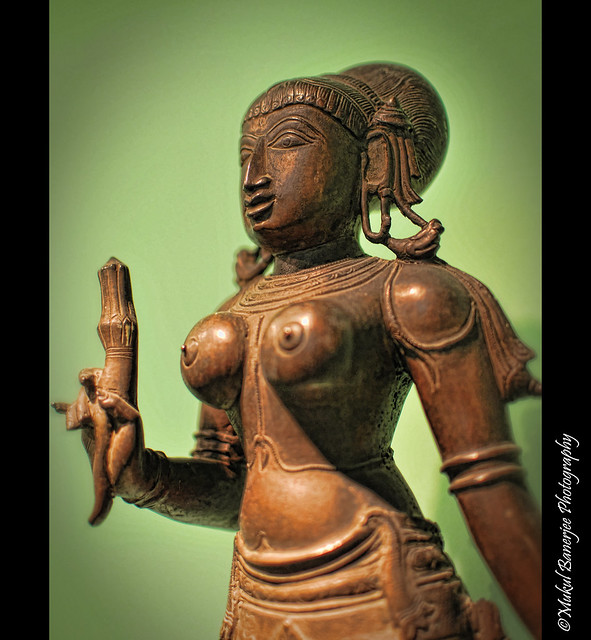
A Yakshini Bronze Statue, 10th CE Chola Empire
Yakshinis (Sanskrit: याक्षिणि, also called yaksinis or yaksis and yakkhini in Pali) are mythical beings of Hindu, Buddhist, and Jain mythology.
A yakshini is the female counterpart of the male yaksha, and they both attend on Kubera (also called Kuber), the Hindu god of wealth who rules in the mythical Himalayan kingdom of Alaka. They both look after treasure hidden in the earth and resemble that of fairies. Yakshinis are often depicted as beautiful and voluptuous, with wide hips, narrow waists, broad shoulders, and exaggerated, spherical breasts. In the Uddamareshvara Tantra, thirty-six yakshinis are described, including their mantras and ritual prescriptions. A similar list of yakshas and yakshinis is given in the Tantraraja Tantra, where it says that these beings are givers of whatever is desired. Although Yakshinis are usually benevolent, there are also yakshinis with malevolent characteristics in Indian folklore.
en.wikipedia.org/wiki/Cholas
en.wikipedia.org/wiki/Chola_art
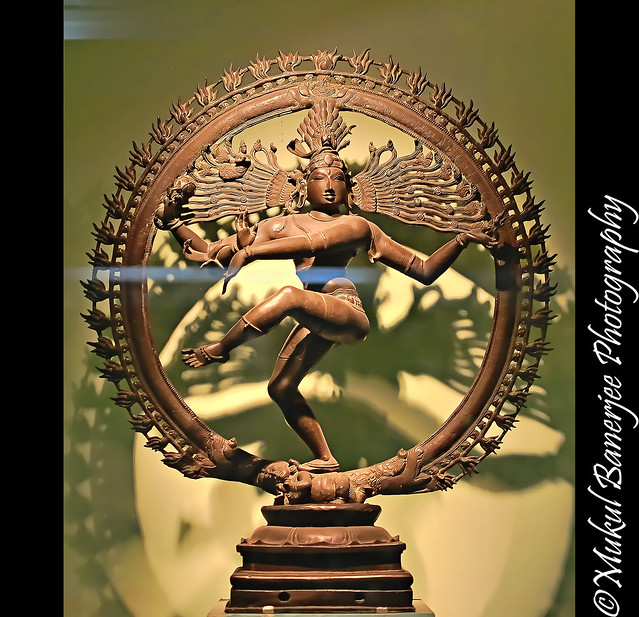
Nataraja, Late Chola Period, 12th CE
Nataraja or Nataraj (Hindustani: [nət̪əˈraːdʒ], The Lord (or King) of Dance; Tamil: கூத்தன் (Kooththan)) is a depiction of the Hindu god Shiva as the cosmic dancer who performs his divine dance to destroy a weary universe and make preparations for god Brahma to start the process of creation. Nataraja is most often depicted through a statue. The dance of Shiva in Tillai, the traditional name for Chidambaram, forms the motif for all the depictions of Shiva as Nataraja. He is also known as "Sabesan" which splits as "Sabayil aadum eesan" in Tamil which means "The Lord who dances on the dais".The form is present in most Shiva temples in South India, and is the main deity in the famous temple at Chidambaram.
The sculpture is usually made in bronze, with Shiva dancing in an aureole of flames, lifting his left leg (and in rare cases, the right leg) and balancing over a demon or dwarf (Apasmara) who symbolizes ignorance. It is a well known sculptural symbol in India and popularly used as a symbol of Indian culture.
The two most common forms of Shiva's dance are the Lasya (the gentle form of dance), associated with the creation of the world, and the Tandava (the violent and dangerous dance), associated with the destruction of weary worldviews - weary perspectives & lifestyles. In essence, the Lasya and the Tandava are just two aspects of Shiva's nature; for he destroys in order to create, tearing down to build again.
en.wikipedia.org/wiki/Nataraja
en.wikipedia.org/wiki/Cholas
en.wikipedia.org/wiki/Chola_art
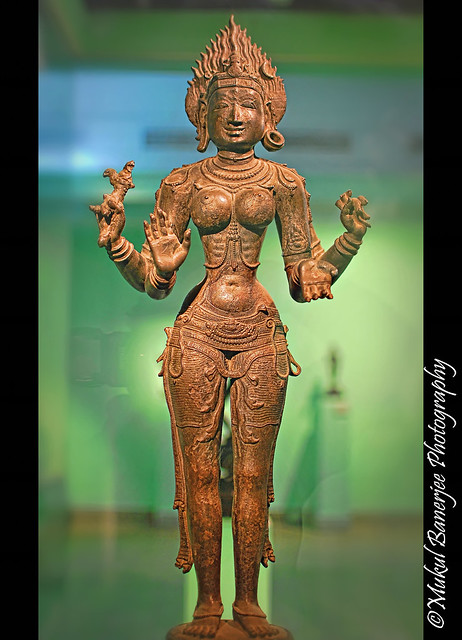
A Goddess Bronze Statue, 10th CE Chola Empire
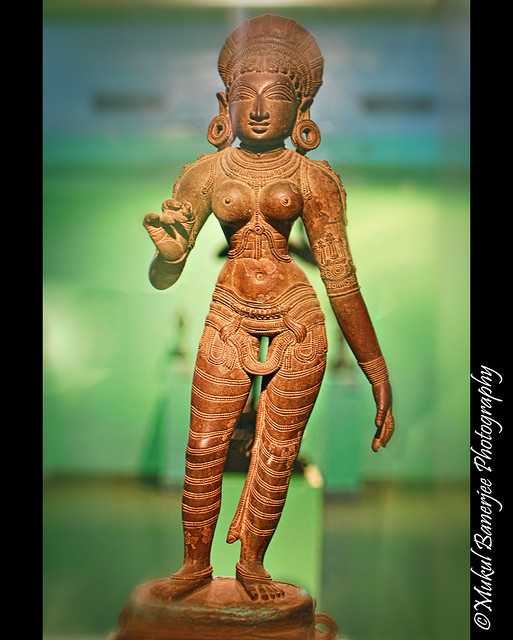
A Goddess Bronze Statue, 10th CE Chola Empire
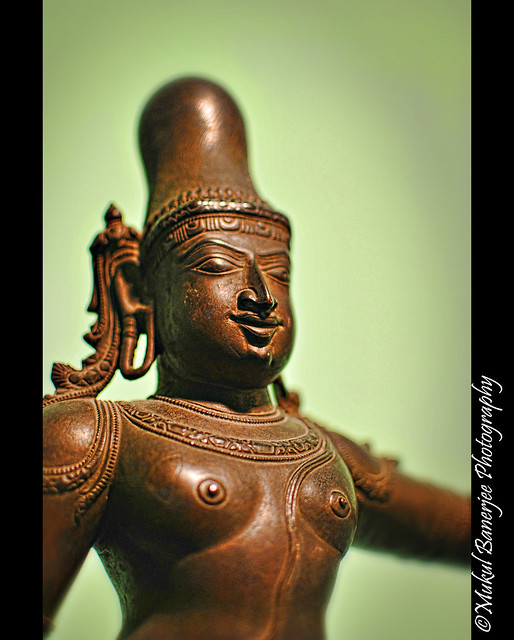
A Bronze Statue, 10th CE Chola Empire
| The Ultimate Self Realization Course (tm) | | |
| Special New Release--Hear It Right Now!! | Special Announcements!
| See Sankarshan Prabhu's | |
| Get Krishna's Special Mercy by Rendering Devotional Service If you'd like to contribute something to help cover the expenses of Sankarshan Prabhu's European Lecture Series you can | On the order of his spiritual master, Srila Prabhupada, Sankarshan Prabhu has dedicated his life for the most urgent work of spreading Krishna consciousness all over the world. The more that Krishna consciousness spreads, the more that the suffering, scarcity, and hate on this planet will be replaced with bliss, abundance and love. This is a golden opportunity for us to do the highest good for all living beings and receive the special blessings of the Lord. Therefore we should, as much as possible, sacrifice our time, energy, and resources to assist Sankarshan Prabhu in his most important work. If you would like to help out to any extent, little or big, kindly inform Sankarshan Prabhu of your desire. | Meet If you would like to meet Sankarshan Prabhu or hear his lectures, you may contact us directly for an appointment or specific information on where and when his lectures will be held. | |
| Do You Have Questions or Need Guidance? | All inquiries are welcome. | Contact Information: Phone: 1-512-835-2121 or Email your questions |

 Sri Krishna Janmastami
Sri Krishna Janmastami Maha Kalash Abhisekha
Annual Patron Member Puja You are cordially invited to sponsor a Golden Kalash to bathe Sri Sri Radha Krishna, on the most auspicious day of
Sri Krishna Janmastami
(September 4, 2007)
This is a wonderful chance for you and your family to sponsor a beautiful bathing ceremony for Sri Sri Radha and Krishna. With your generous sponsorship, you will get to keep the sacred Kalash that the temple priest uses to bathe the Lord on your behalf. We will mail you your golden Kalash along with a wonderful assortment of prasadam sweets that will be offered to Sri Sri Radha Krishna on Janmastami. Your tax deductible contribution with help us to maintain and develop the worship of Lord Krishna.
Your golden Kalash is an amazingly beautiful transcendental work of art that your family will treasure for many generations. It will be shipped to you in a red velvet box as seen above:
There is a very limited supply. So if you would like to to sponsor a Kalash, do so right away before they are all taken: www.backtohome.com/KalashToday's Thought - December 2006
Today's Thought - November 2006
Today's Thought - October 2006
Today's Thought - September 2006
Today's Thought - August 2006
Today's Thought - July 2006
Today's Thought - June 2006
Today's Thought - May 2006
Today's Thought - April 2006
Today's Thought - March 2006
Today's Thought - February 2006
Today's Thought - January 2006


TABLA - FUENTES - FONTS
SOUV2
- SOUV2P.TTF - 57 KB
- SOUV2I.TTF - 59 KB
- SOUV2B.TTF - 56 KB
- SOUV2T.TTF - 56 KB
- bai_____.ttf - 46 KB
- babi____.ttf - 47 KB
- bab_____.ttf - 45 KB
- balaram_.ttf - 45 KB
- SCAGRG__.TTF - 73 KB
- SCAGI__.TTF - 71 KB
- SCAGB__.TTF - 68 KB
- inbenr11.ttf - 64 KB
- inbeno11.ttf - 12 KB
- inbeni11.ttf - 12 KB
- inbenb11.ttf - 66 KB
- indevr20.ttf - 53 KB
- Greek font: BibliaLS Normal
- Greek font: BibliaLS Bold
- Greek font: BibliaLS Bold Italic
- Greek font: BibliaLS Italic
- Hebrew font: Ezra SIL
- Hebrew font: Ezra SIL SR
Disculpen las Molestias

Sankarshan Das Adhikari - ANUAL
Conceptos Hinduistas (1428)SC
Aa-Anc · Aga - Ahy · Ai - Akshay · Akshe - Amshum · Ana - Ancie · Ang - Asvayu · Ata - Az · Baa-Baz · Be-Bhak · Bhal-Bu · C · Daa-Daz · De · Dha-Dry · Du-Dy · E · F · Gaa-Gayu · Ge-Gy · Ha-He · Hi-Hy · I · J · K · Ka - Kam · Kan - Khatu · Ki - Ko · Kr - Ku · L · M · N · O · P · R · S · Saa-San · Sap-Shy · Si-Sy · Ta - Te · U · V · Ve-Vy · Y · Z
Conceptos Hinduistas (2919) SK
Aa-Ag · Ah-Am · Ana-Anc · And-Anu · Ap-Ar · As-Ax · Ay-Az · Baa-Baq · Bar-Baz · Be-Bhak · Bhal-Bhy · Bo-Bu · Bra · Brh- Bry · Bu-Bz · Caa-Caq · Car-Cay · Ce-Cha · Che-Chi · Cho-Chu · Ci-Cn · Co-Cy · Daa-Dan · Dar-Day · De · Dha- Dny · Do-Dy · Ea-Eo · Ep-Ez · Faa-Fy · Gaa-Gaq · Gar-Gaz · Ge-Gn · Go · Gra-Gy · Haa-Haq · Har-Haz · He-Hindk · Hindu-Histo · Ho-Hy · Ia-Iq · Ir- Is · It-Iy · Jaa- Jaq · Jar-Jay · Je-Jn · Jo-Jy · Kaa-Kaq · Kar-Kaz · Ke-Kh · Ko · Kr · Ku - Kz · Laa-Laq · Lar-Lay · Le-Ln · Lo-Ly · Maa-Mag · Mah · Mai-Maj · Mak-Maq · Mar-Maz · Mb-Mn · Mo-Mz · Naa-Naq · Nar-Naz · Nb-Nn · No-Nz · Oa-Oz · Paa-Paq · Par-Paz · Pe-Ph · Po-Py · Raa-Raq · Rar-Raz · Re-Rn · Ro-Ry · Saa-Sam · San-Sar · Sas-Sg · Sha-Shy · Sia-Sil · Sim-Sn · So - Sq · Sr - St · Su-Sz · Taa-Taq · Tar-Tay · Te-Tn · To-Ty · Ua-Uq · Ur-Us · Vaa-Vaq · Var-Vaz · Ve · Vi-Vn · Vo-Vy · Waa-Wi · Wo-Wy · Yaa-Yav · Ye-Yiy · Yo-Yu · Zaa-Zy





No hay comentarios:
Publicar un comentario